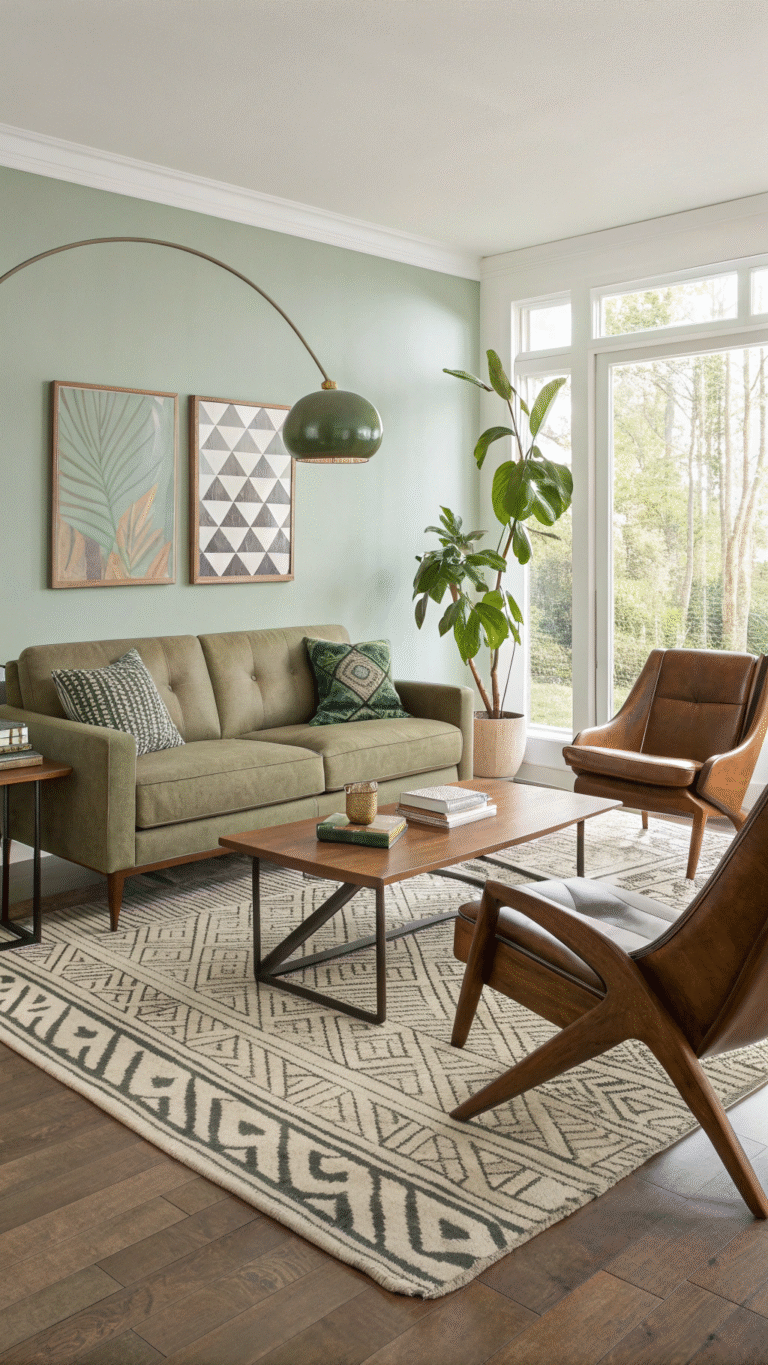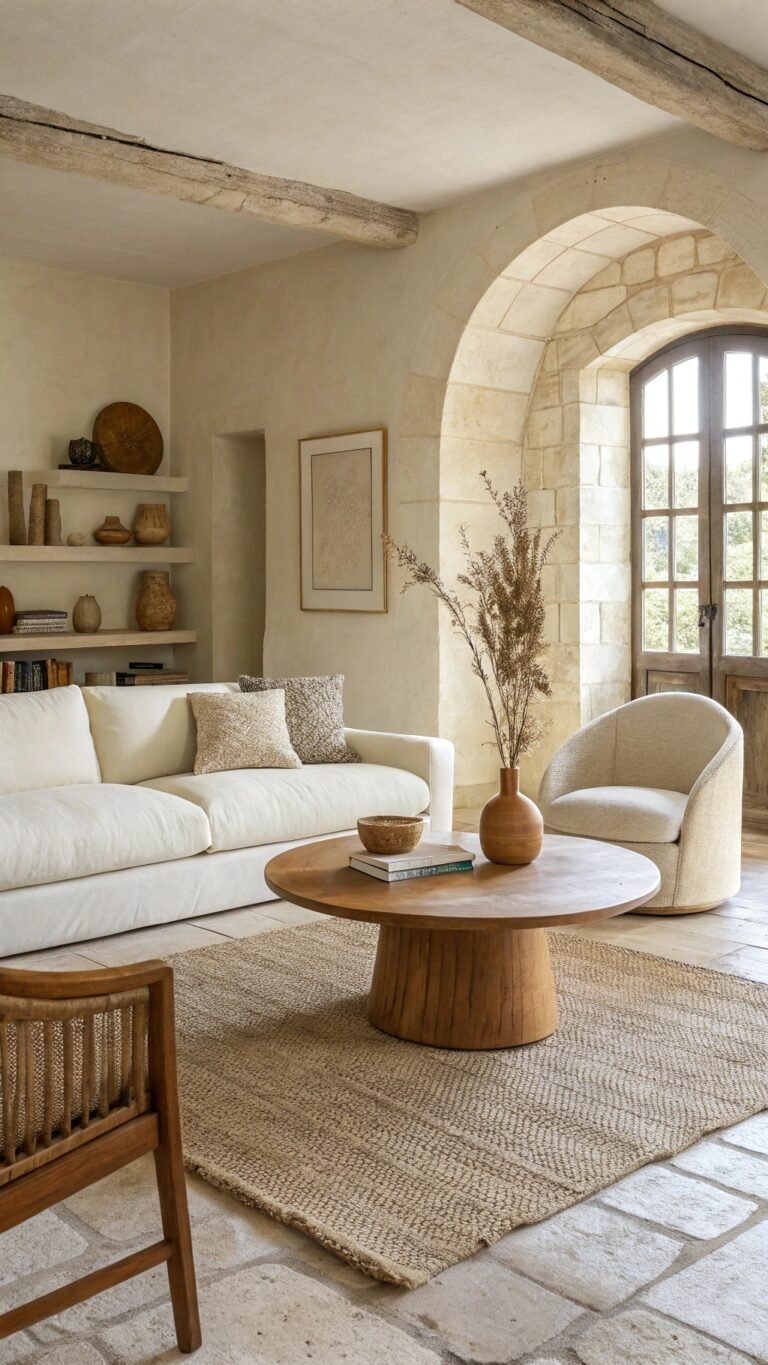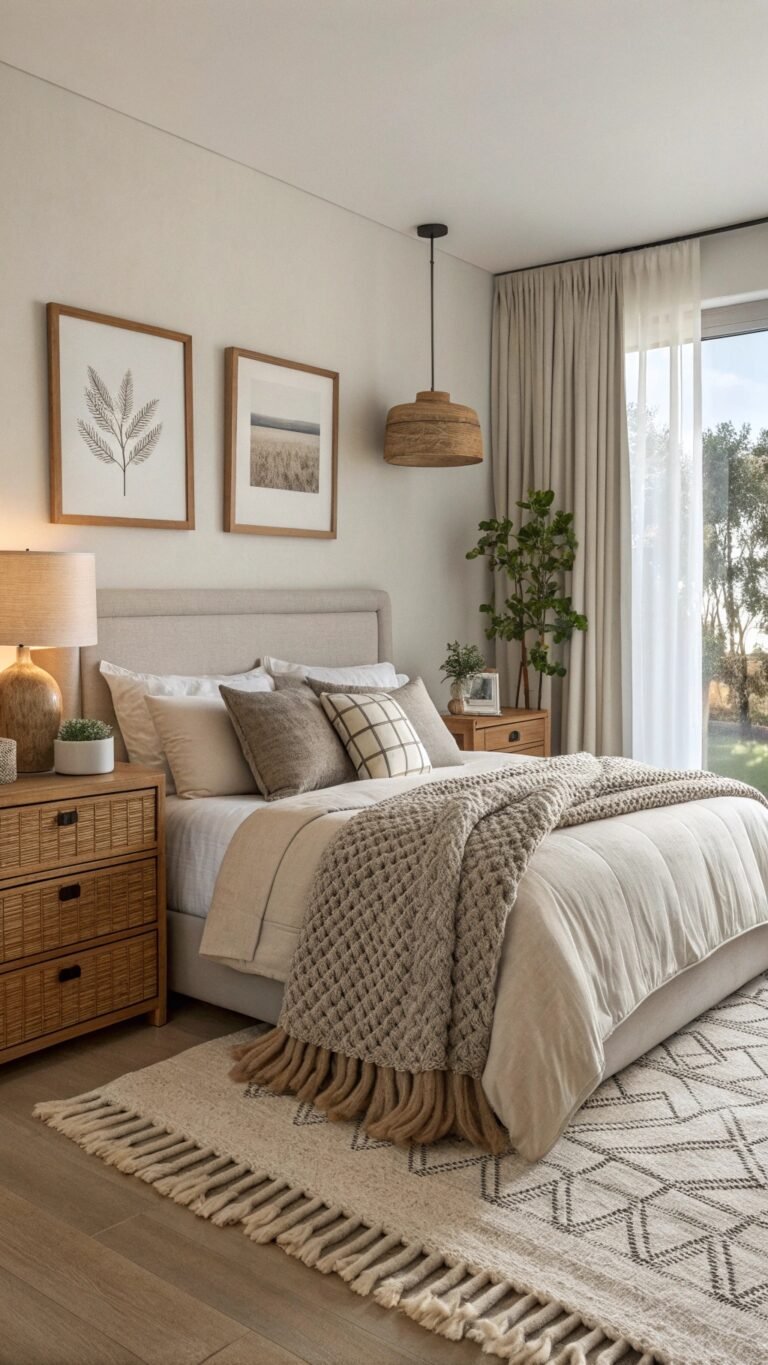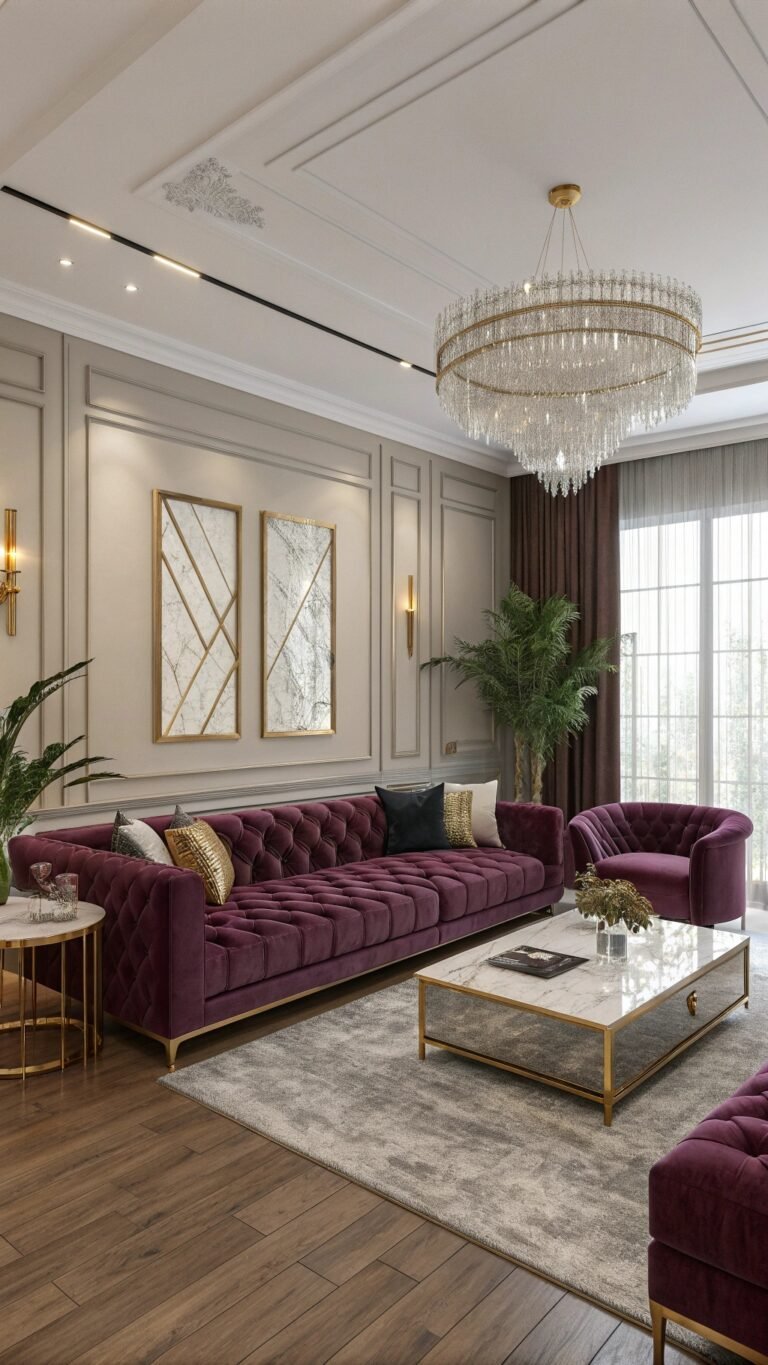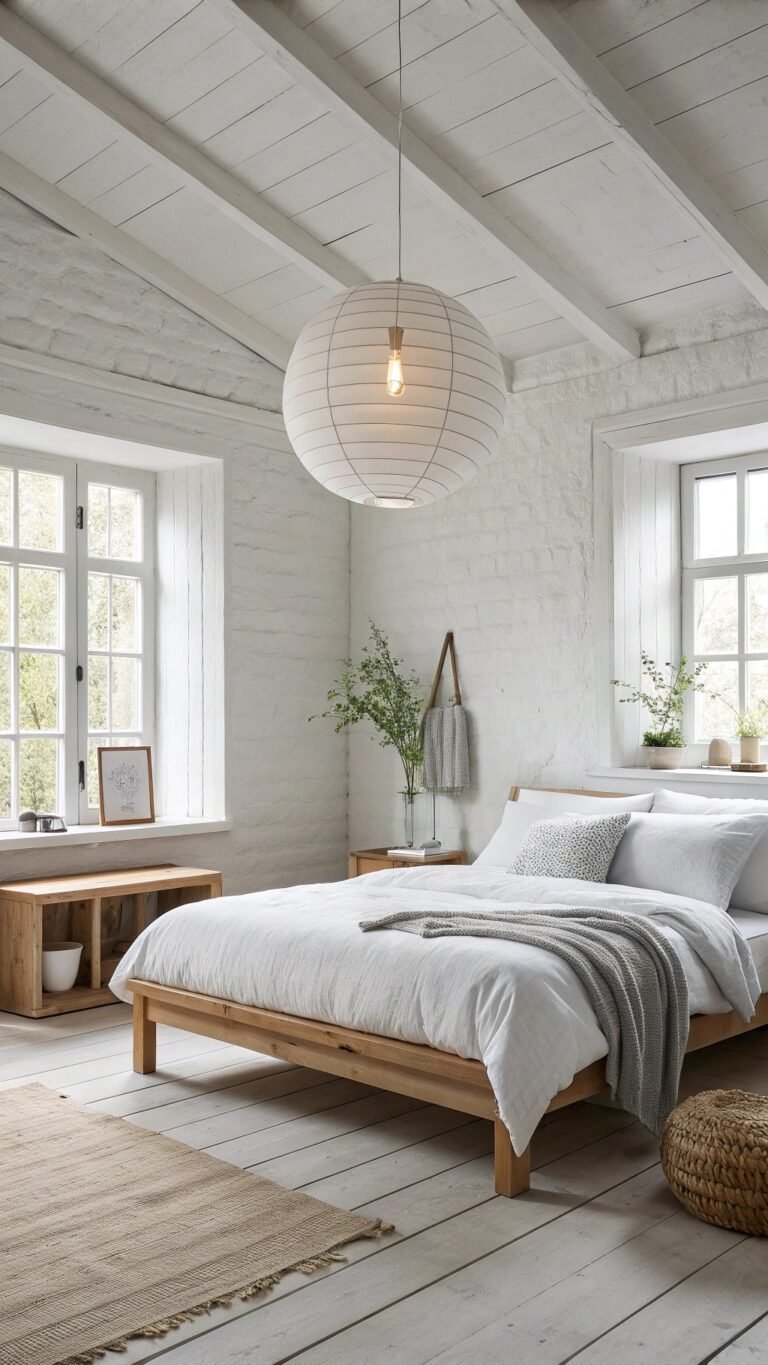Living Room Decor: 11 Ideas to Style a Space You’ll Actually Use
Living room decor is trending toward intentional comfort—elevated basics, layered textures, and color used with purpose. People want rooms that photograph beautifully and handle real life.
From neutral serenity to pattern play, these ideas are must-try because they’re modular: pick one hero move, add two smart tweaks, and your space feels new without a remodel.
1) Warm Neutral Layers (Organic Modern)

Build a calm foundation with warm whites, oat and sand tones, and natural textures. Choose a low, deep sofa in performance linen, a rounded oak or stone coffee table, and a wool or jute blend rug. Keep styling pared back—ceramics, books, a single branch—so materials and silhouettes do the talking. This palette calms visual noise and flatters daylight.
What makes this idea unique:
It leans into texture over color. Bouclé against raw oak, limewash against matte stone—subtle contrasts that feel sophisticated, not busy. Curved forms soften boxy rooms and make traffic flow easier. Negative space is part of the design; you’ll get a magazine-clean look that still invites lounging, pets, and popcorn nights.
2) Japandi Calm (Craft + Minimal)

Blend Japanese restraint with Scandinavian warmth. Keep silhouettes low and unfussy, use pale woods like ash or oak, and a muted palette of ecru, taupe, and clay. Add cane-front storage, paper lantern lighting, and handcrafted stoneware. Negative space is intentional, letting a few beautiful objects carry the room.
What makes this idea unique:
Craftsmanship replaces ornament. You’ll rely on joinery, ribbed or fluted details, and quality fabrics instead of heavy decor. Curved edges on tables and lamps balance straight cabinetry lines. The result is an effortlessly serene living room that supports slow mornings, tea rituals, and screen-free evenings—while looking timeless on camera.
3) New Traditional (Tailored & Collected)
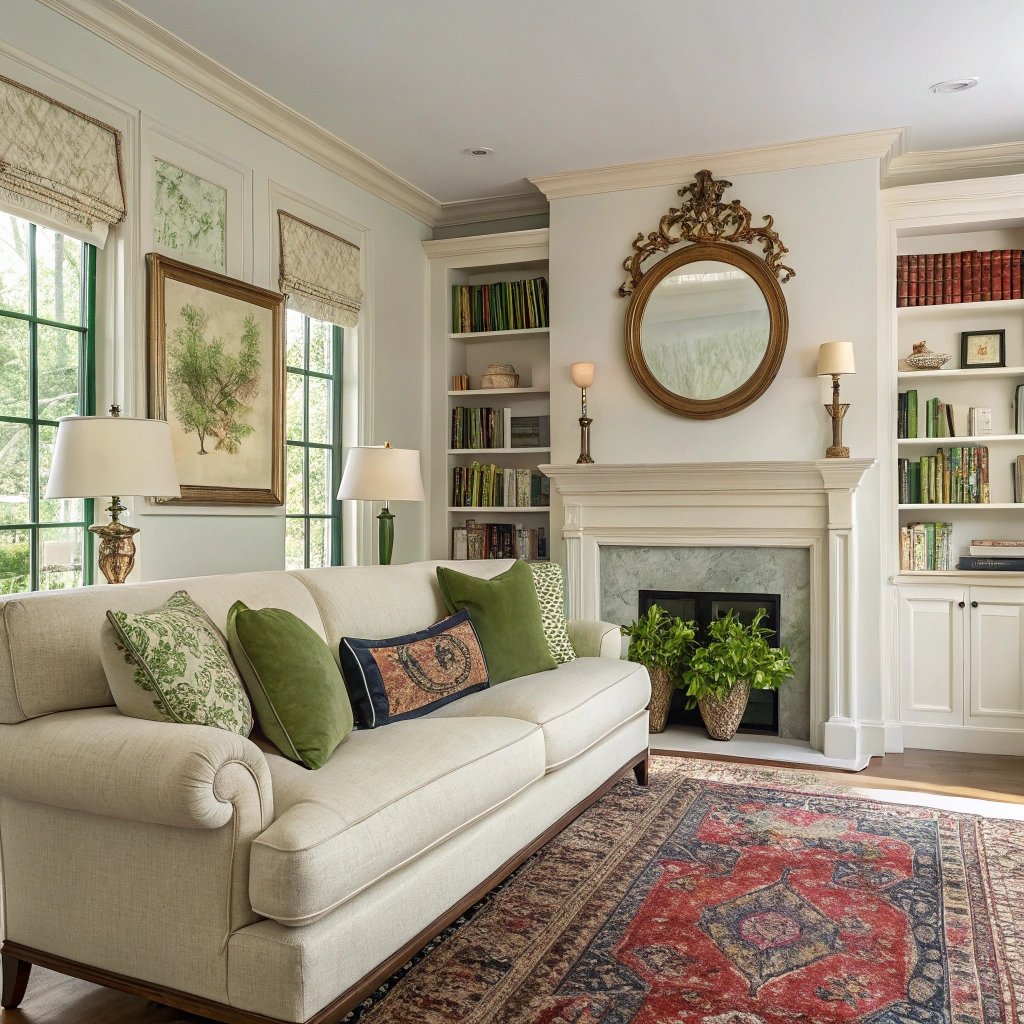
Classic bones, modern edits. Think roll-arm or skirted sofa, pleated lampshades, framed botanicals, and a wool Persian-style rug. Balance with crisp solids and micro-stripes, plus simple brass accents. Built-in bookcases or a styled cabinet give order and make the room feel gracious without tipping old-fashioned.
What makes this idea unique:
Scale and restraint keep it fresh. Use one antique with patina (mirror, chest) and one contemporary moment (abstract art, metal cocktail table) for tension. Keep the palette tight—moss, navy, ivory—so patterns harmonize. You’ll get a timeless living room that feels layered, welcoming, and quietly upscale.
4) Color-Drenched Monochrome
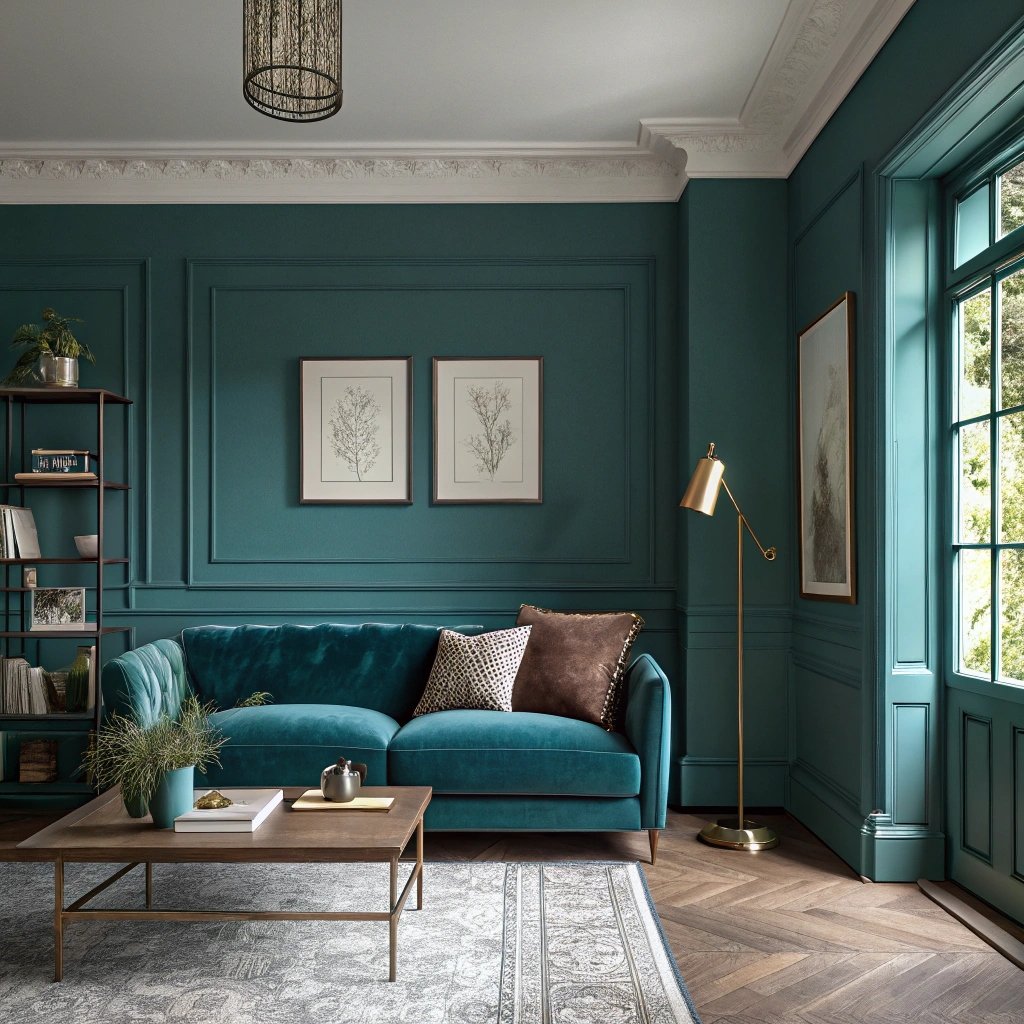
Choose one hue—deep teal, merlot, or clay—and wrap walls, trim, and built-ins in it for an enveloping cocoon. Keep furnishings tonally related, then add wood and brass to warm it up. Large, creamy-matted art and off-white linen curtains give the eye a place to rest.
What makes this idea unique:
Dimensional finish is the secret: matte walls, satin doors, velvet pillows—same color, different textures. Lamps with linen shades create a flattering glow against saturated paint. This approach hides small imperfections and visual clutter, making the space feel cozy, sculptural, and cinematic.
5) Coastal Light (Airy, Not Theme-y)
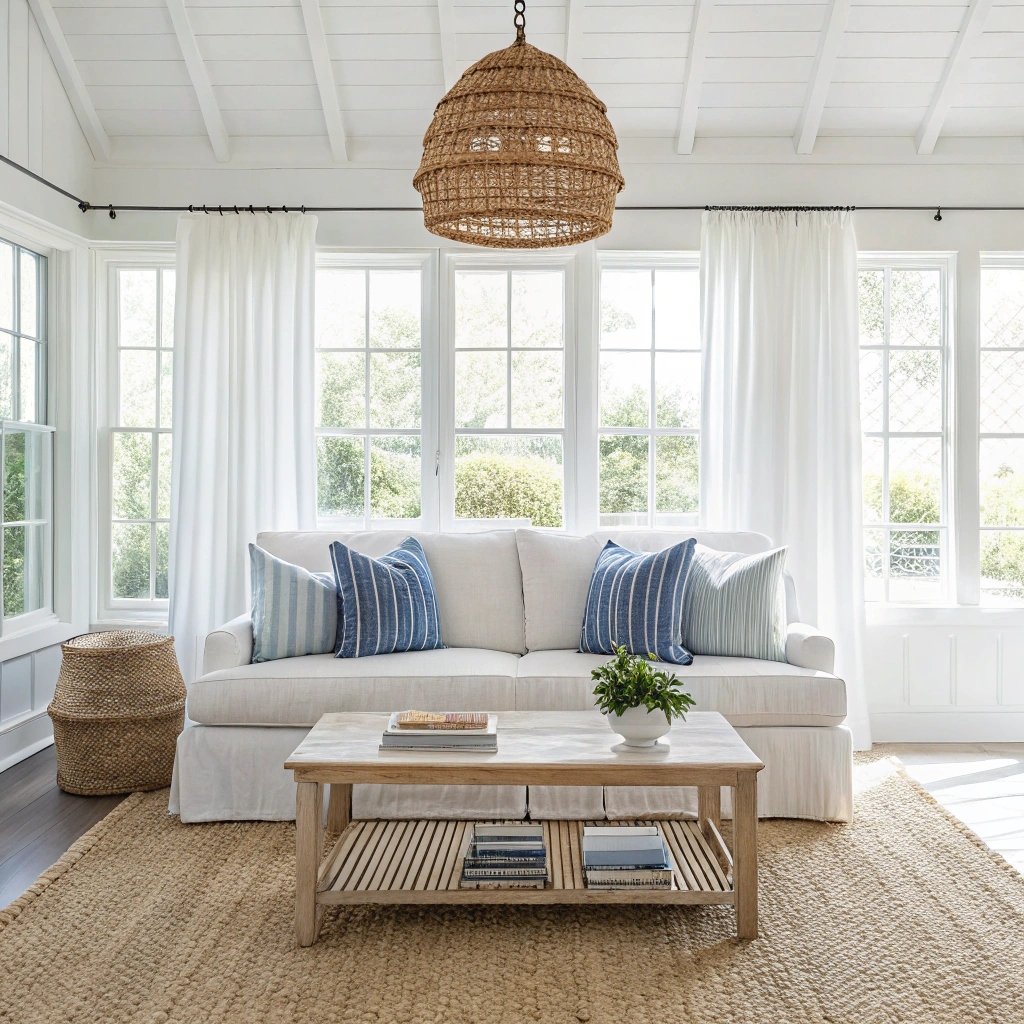
Capture breezy ease with white walls, pale woods, pinstripe blues, and woven textures. A slipcovered sofa, seagrass or jute rug, and high-and-wide linen curtains amplify daylight. Keep silhouettes simple and let airflow, sunlight, and texture do the heavy lifting.
What makes this idea unique:
Skip literal nautical motifs. Use nuanced cues—bleached oak, matte ceramic blues, weathered finishes. Layer sheers over blackout for function that still looks floaty. The palette expands small spaces and feels fresh year-round, not just in summer homes.
6) Industrial Loft, Softened

Celebrate brick, concrete, and black metal, then soften with plush textiles. Choose a structured leather or tweed sofa, a reclaimed wood coffee table, and a vintage-style rug. Dimmable sconces and a factory pendant set a moody, creative tone. Greenery breaks up the hard edges.
What makes this idea unique:
Contrast drives comfort: cool steel + warm leather, rough wood + soft wool. Keep the palette to charcoal, espresso, tobacco so the architecture shines. Hide cables with surface-mounted conduit painted to match—practical and on-brand for loft style.
7) Curves & Soft Geometry

Trade sharp corners for arcs—rounded sofas, oval coffee tables, scalloped shades, arched mirrors. Curves guide movement, reduce visual tension, and make compact rooms feel friendly. Keep color low-contrast so silhouette leads the story rather than pattern.
What makes this idea unique:
Mix radiuses: tight curves on side tables, generous arcs on seating. A radial-pattern rug echoes the shapes without shouting. This look photographs beautifully and feels inherently cozy, creating a living room that’s design-forward and easy to live in.
8) Edited Maximalism (Pattern Play)
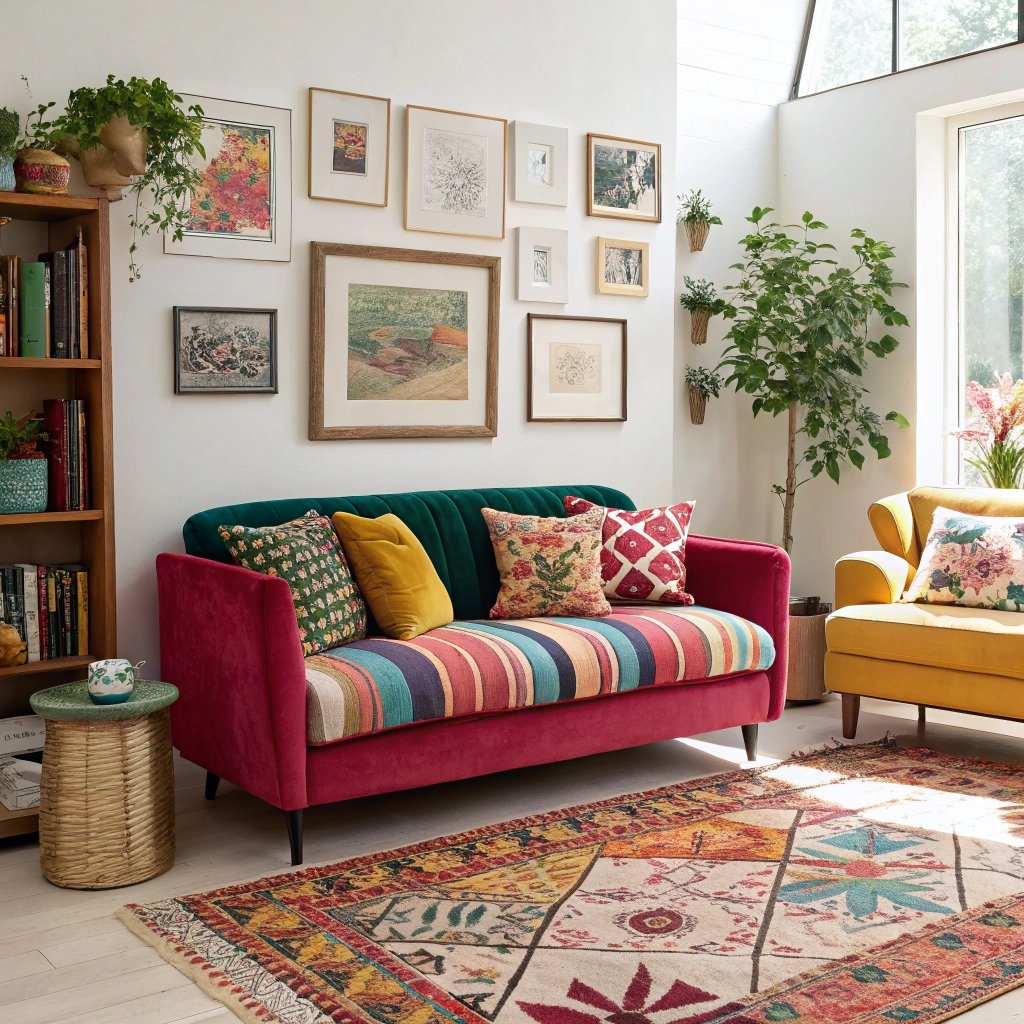
Layer color, prints, and treasures—florals, stripes, geometrics—over a strong base rug. Pair a statement sofa with patterned pillows and a contrasting chair. Use books, ceramics, and art to tell a story. Keep repetition of color across elements so the mix feels orchestrated, not chaotic.
What makes this idea unique:
Discipline makes it sing: limit to three main colors and one metallic, vary pattern scale (one large, one medium, one small), and anchor with solid curtains or a large matte artwork. You’ll get personality and warmth without visual fatigue.
9) Rustic Modern (Wood, Stone & Linen)
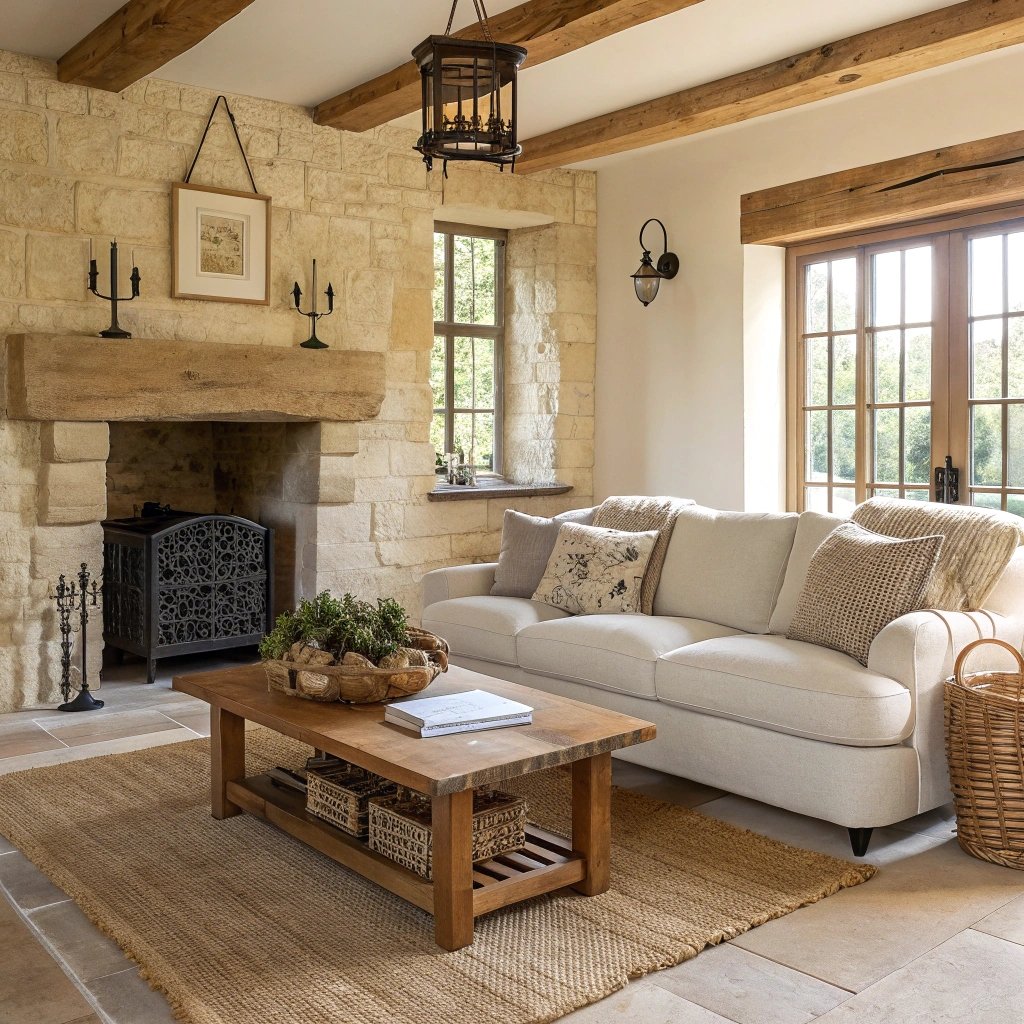
Blend raw materials with clean lines: hand-hewn or oak coffee table, stone fireplace or mantle, linen-upholstered seating, and iron accents. Keep accessories minimal—ceramic jars, woven baskets, wool throws. The vibe is grounded and serene, like a modern cabin set in the city.
What makes this idea unique:
Texture is the hero: rough grain against smooth stone, nubby linen against matte black. A restrained palette—ivory, charcoal, natural wood—lets materials age gracefully and simplifies cleaning. The result is timeless, tactile comfort.
10) Biophilic Green Escape
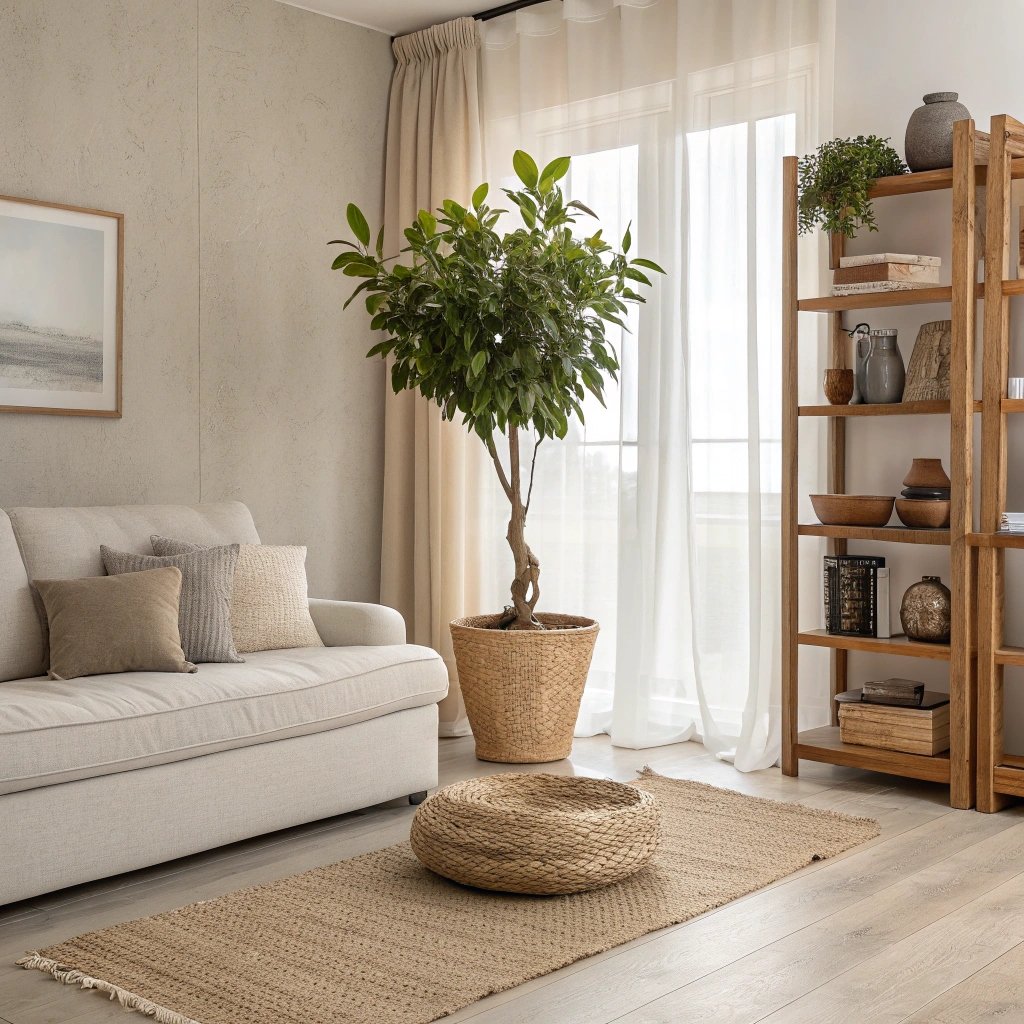
Bring nature in with layered greenery, natural fibers, and an earth-derived palette. Anchor with one large plant in a sculptural pot and a few supporting varieties. Use sisal or jute rugs, oak shelves, and ceramic vessels to keep the room feeling fresh and restorative.
What makes this idea unique:
Prioritize scale over quantity. One medium-to-large plant is calmer than many tiny pots. Add a stone tray for a diffuser and operate sheer curtains for dappled light. Sensory layers—texture, scent, and soft sound—make relaxation almost automatic.
11) Small-Space Modular Living
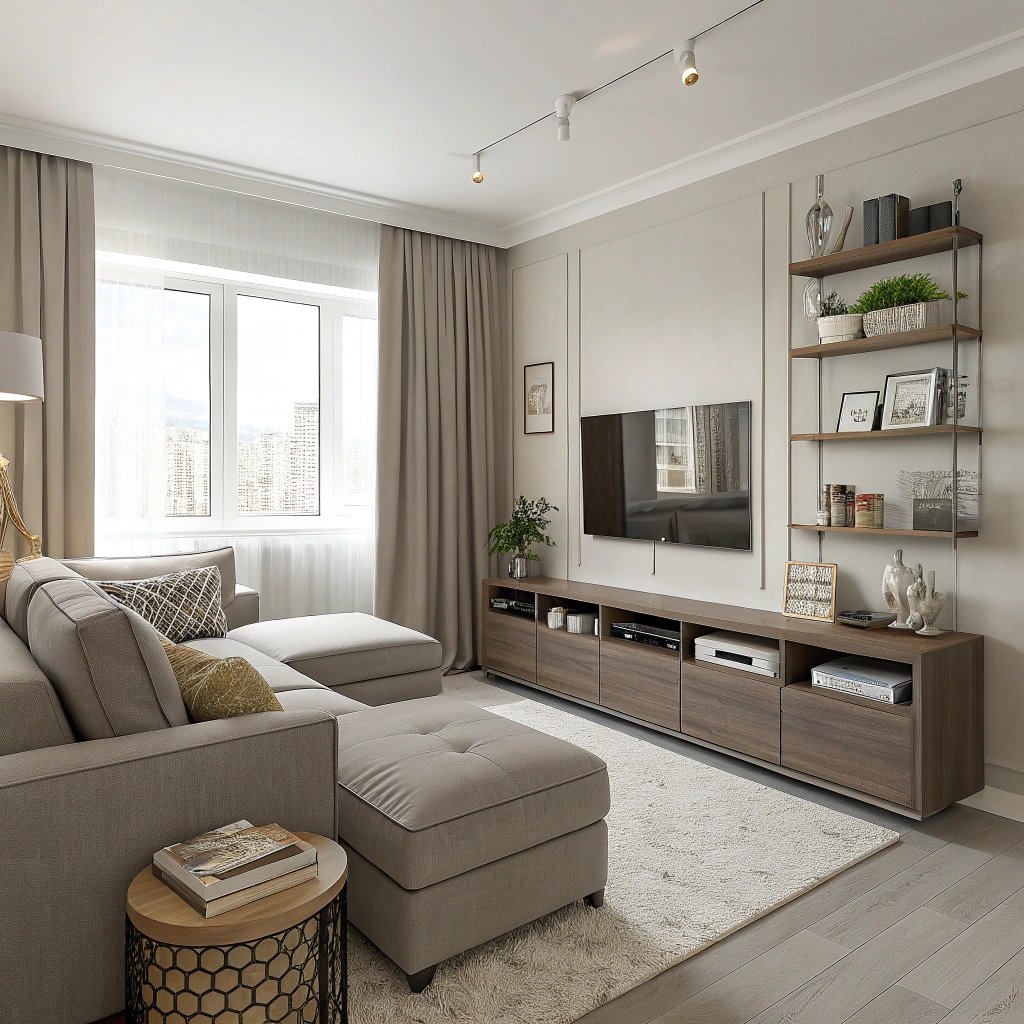
Design for flexibility. Choose a compact sectional with movable ottoman, nesting side tables, and a wall-mounted media unit to free floor space. High-and-wide curtains, a large mirror, and plug-in sconces maximize light and usability without adding bulk.
What makes this idea unique:
Every piece works double duty: a storage ottoman, a drop-leaf side table that becomes a desk, and a ledge-style shelf that acts as both display and lighting rail. Cable management and neutral upholstery keep the look clean as layouts shift for work, guests, or movie night.
Quick Tips to Maximize Your Living Room Decor
Pick one major move (color wrap, sofa swap, or rug upgrade) and support it with two simple tweaks.
Keep a tight palette; vary texture, shape, and scale for depth.
Light in layers—ambient, task, accent—to sculpt mood and make finishes glow.


